#1000 A.D.
Text

~ Necklace with seven clam-shell-shaped pendants.
Place of origin: Perú
Culture: Tiahuanaco or Huari
Period: Middle Horizon
Date: A.D. 700–1000
Medium: Silver
#8th century#12th century#necklace#silver necklace#clam shell#pendants#Tiahuanaco#huari#peru#peruvian#south america#history#museum#archeology#archaeology#middle horizon#a.d. 700#a.d. 1000
923 notes
·
View notes
Note
hai . no idea if you’re taking art requests but could we get a humanized version of raphael von tempus /nonforceful . i absolutely LOVE your apostle designs btw :3

you're lucky i finished my tempus dude sketches (minus guartan, who is still a horse)
#raphael von tempus#dr. james alviion#dr. malcolm roenn#divine timekeeper ophanium#sorry.#sekaiju a world of creatures#insert image of people at a party grimacing at the camera#with the exception of ophanium who is instead smiling smugly#two jesus looking guys#a lab rat that's been alive since 1000 A.D#and the rock wasp
8 notes
·
View notes
Text
Doing an Early Church study and they casually hit us with “the ten thousand martyrs [from a single city/location]” and “So many were killed on a single day that the axe, blunted and worn out by the slaughter, was broken in pieces, while the exhausted executioners had to be periodically relieved.”
Then you look it up and learn that, yes, the martyrdom of ten thousand people in Nicomedia is supported by historical documents and they can actually specify it likely happened in the year 303 A.D. under the beginning of Diocletian’s reign.
Historians estimate that between 250 and 311 A.D, 60,000 Catholics were martyred. That’s around 1,000 a year, or three a day, for SIXTY YEARS.
“✨We are the granddaughters of the witches you couldn’t burn.✨” Oh yeah? Well we’re the descendants of the Catholics you couldn’t kill. Of people who stood firm in the face of horrors beyond comprehension, who knew that hours or days of pain was nothing compared to the ecstasy that awaited them. I pray that I can have a fraction of their courage and dignity, a hint of their resolve and charity.
Holy martyrs, pray for us.
#catholic#catholicism#christianity#religion#catholic nerdstuff#martyrs#martyrdom#“Why are you Catholic?”#Because only one Church has endured for over 2000 years#Only one Church can trace their roots directly back to the apostles in an unbroken line of succession#Only one Church can look at documents written around 100 A.D. by students of the apostles themselves and say#‘Yes. This is what we teach and have taught from the very beginning’#Because only a Church that offers truth could’ve survived such horrific persecution when it had barely left infancy#Because it is only empowered by God that 100s of 1000s of men women and children could face persecution torture and death without flinching
9 notes
·
View notes
Text
just thought someone asking Grendel to speak english and his mom saying "that IS bloody english you fUCKING MILLENIAL" but she means the 1st millennium a.d.
#anglo-saxon#everyone born after 1000 a.d. is a millenial i dont make the rules#silliness#folklore#history#finalsposting#grendel#grendel's mother#beowulf#studyblr#linguistics#old english#....i should not be allowed on “fashion trends of the generations” youtube rabbit holes it somehow makes me ever weirder than folklore T_T
1 note
·
View note
Note
I had a real bad day at work. Have you any fun facts that might distracted a pathetic little jelly bean?
good evening little jelly bean, im sorry about your day.
the northernmost prefecture of japan's largest contiguous island (Honshu) is a place called Aomori. the literal translation of this name reveals that it means Blue Forest on its face, as 青 (Ao) refers to blue hues. the kanji for forest is 森 (mori), which you may also recognize from Animal Crossing's Japanese title, Dobutsu no Mori (どうぶつの森)-- or Animal Forest. anyhow we're focusing on the blue thing right now.
before the heian period, the japanese word for what we'd specifically refer to as "green"-- Midori-- didn't exist yet. the only four colors the language had, which weren't really colors as much as they were hues, were Black, White, Red, and Blue. Midori came along around 1000 A.D.-ish, but wasn't widely adopted in usage until around world war II. as such, some people in japan still refer to green things as blue, such as green traffic lights (青信号 Aoshingou), green apple (青りんご Aoringo), and green mountain (青山 Aoyama).
252 notes
·
View notes
Text




The Mikaelson Siblings - stealing hearts since 1000 A.D 🫀
#elijah mikaelson#klaus mikaelson#niklaus mikaelson#kol mikaelson#rebekah mikaelson#the originals#the vampire diaries#the mikaelsons#mikaelson family#mikaelson siblings#tvd#tvd gifs#see what i did there
816 notes
·
View notes
Text

Summer night under the Greenlandic Coast circa A.D. 1000 (Erik the Red and his crew on board a Viking ship)
by Carl Rasmussen
#carl rasmussen#art#vinland sagas#whales#vikings#viking#sailing#iceberg#icebergs#greenland#history#european#marine art#vinland#vinland saga#voyages#voyage#norse#nordic#icelandic#danish#north america#exploration#explorers#americas#iceland#greenlandic#erik the red#norway#ship
456 notes
·
View notes
Text
The family tree of humanity is much more interconnected than we tend to think. “We’re culturally bound and psychologically conditioned to not think about ancestry in very broad terms,” Rutherford says. Genealogists can only focus on one branch of a family tree at a time, making it easy to forget how many forebears each of us has.
Imagine counting all your ancestors as you trace your family tree back in time. In the nth generation before the present, your family tree has 2n slots: two for parents, four for grandparents, eight for great-grandparents, and so on. The number of slots grows exponentially. By the 33rd generation—about 800 to 1,000 years ago—you have more than eight billion of them. That is more than the number of people alive today, and it is certainly a much larger figure than the world population a millennium ago.
This seeming paradox has a simple resolution: “Branches of your family tree don’t consistently diverge,” Rutherford says. Instead “they begin to loop back into each other.” As a result, many of your ancestors occupy multiple slots in your family tree. For example, “your great-great-great-great-great-grandmother might have also been your great-great-great-great-aunt,” he explains.
The consequence of humanity being “incredibly inbred” is that we are all related much more closely than our intuition suggests, Rutherford says. Take, for instance, the last person from whom everyone on the planet today is descended. In 2004 mathematical modeling and computer simulations by a group of statisticians led by Douglas Rohde, then at the Massachusetts Institute of Technology, indicated that our most recent common ancestor probably lived no earlier than 1400 B.C. and possibly as recently as A.D. 55. In the time of Egypt’s Queen Nefertiti, someone from whom we are all descended was likely alive somewhere in the world.
Go back a bit further, and you reach a date when our family trees share not just one ancestor in common but every ancestor in common. At this date, called the genetic isopoint, the family trees of any two people on the earth now, no matter how distantly related they seem, trace back to the same set of individuals. “If you were alive at the genetic isopoint, then you are the ancestor of either everyone alive today or no one alive today,” Rutherford says. Humans left Africa and began dispersing throughout the world at least 120,000 years ago, but the genetic isopoint occurred much more recently—somewhere between 5300 and 2200 B.C., according to Rohde’s calculations.
At first glance, these dates may seem much too recent to account for long-isolated Indigenous communities in South America and elsewhere. But “genetic information spreads rapidly through generational time,” Rutherford explains. Beginning in 1492, “you begin to see the European genes flowing in every direction until our estimates are that there are no people in South America today who don’t have European ancestry.”
In fact, even more recent than the global genetic isopoint is the one for people with recent European ancestry. Researchers using genomic data place the latter date around A.D. 1000. So Christopher Lee’s royal lineage is unexceptional: because Charlemagne lived before the isopoint and has living descendants, everyone with European ancestry is directly descended from him. In a similar vein, nearly everyone with Jewish ancestry, whether Ashkenazic or Sephardic, has ancestors who were expelled from Spain beginning in 1492. “It’s a very nice example of a small world but looking to the past,” says Susanna Manrubia, a theoretical evolutionary biologist at the Spanish National Center for Biotechnology.
Not everyone of European ancestry carries genes passed down by Charlemagne, however. Nor does every Jew carry genes from their Sephardic ancestors expelled from Spain. People are more closely related genealogically than genetically for a simple mathematical reason: a given gene is passed down to a child by only one parent, not both. In a simple statistical model, Manrubia and her colleagues showed that the average number of generations separating two random present-day individuals from a common genealogical ancestor depends on the logarithm of the relevant population’s size. For large populations, this number is much smaller than the population size itself because the number of possible genealogical connections between individuals doubles with each preceding generation. By contrast, the average number of generations separating two random present-day individuals from a common genetic ancestor is linearly proportional to the population size because each gene can be traced through only one line of a person’s family tree. Although Manrubia’s model unrealistically assumed the population size did not change with time, the results still apply in the real world, she says.
Because of the random reshuffling of genes in each successive generation, some of your ancestors contribute disproportionately to your genome, while others contribute nothing at all. According to calculations by geneticist Graham Coop of the University of California, Davis, you carry genes from fewer than half of your forebears from 11 generations back. Still, all the genes present in today’s human population can be traced to the people alive at the genetic isopoint. “If you are interested in what your ancestors have contributed to the present time, you have to look at the population of all the people that coexist with you,” Manrubia says. “All of them carry the genes of your ancestors because we share the [same] ancestors.”
And because the genetic isopoint occurred so recently, Rutherford says, “in relation to race, it absolutely, categorically demolishes the idea of lineage purity.” No person has forebears from just one ethnic background or region of the world. And your genealogical connections to the entire globe mean that not too long ago your ancestors were involved in every event in world history.
2K notes
·
View notes
Photo




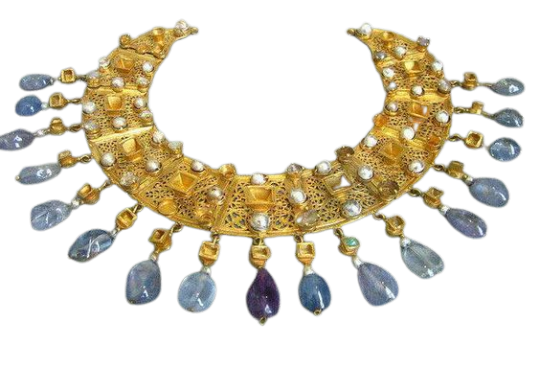




Random PNGs, part 119.
(1. Earrings from Tillya Tepe, 2. Quartz with dumortierite inclusions, 3. Chestnut leaf with golden calligraphy, 4. Egyptian glass Horus head, 5. Byzantine collar with gold & sapphires, 6. World's largest sapphire, 7. A.D. 800–1000 Greek wristbands, 8. Azurite with malachite, 9. Byzantine or Avar gold goblet)
564 notes
·
View notes
Text
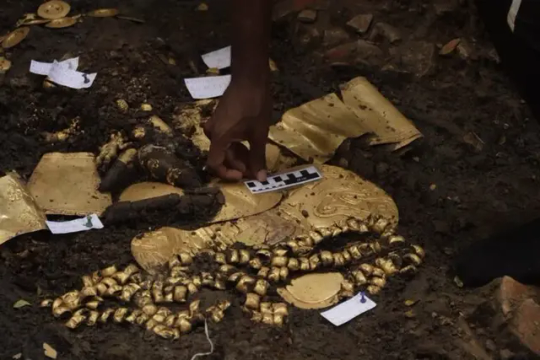
A Major Tomb With Gold and Ceramic Artifacts Discovered in Panama
In an archaeological find in the El Caño Archaeological Park, located in the district of Natá, province of Coclé, in Panama, a tomb has been discovered that sheds light on the sophisticated Coclé society of pre-Hispanic times.
The tomb thought to belong to a Coclé lord and dating back to 750 CE, was found to contain a wealth of funerary offerings, including ceramic and gold artifacts.
The El Caño Archaeological Park is well-known for its necropolis of tombs and stone monoliths that date back to 700–1000 CE. American explorer Hyatt Verrill first realized the importance of the site in 1925 when he discovered ancient monoliths beside the Rio Grande River.
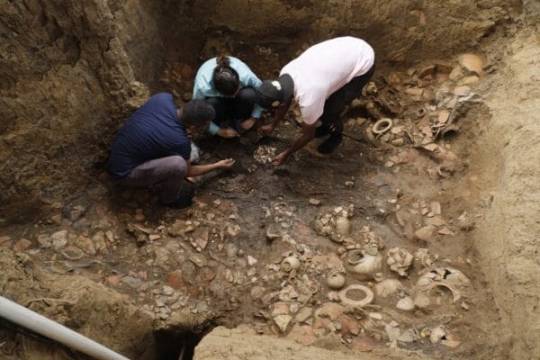
Linette Montenegro, National Heritage Director of the Ministry of Culture (MiCultura), explained that this discovery is part of the ongoing archeological project in the park.
The project, started in 2022 and financed through a cooperation agreement between the Ministry of Culture and the El Caño Foundation, aims to thoroughly explore Tomb No. 9 during the 2021-2024 campaigns.
The tomb’s contents, consisting of 5 pectorals, 2 belts of gold beads, 4 bracelets, 2 earrings in the shape of human figures, an earring in the shape of a double crocodile, 1 necklace of circular beads, two bells, bracelets, and a skirt made with dog teeth, and a set of bone flutes, is testimony to the cultural and social wealth of the Coclé society.
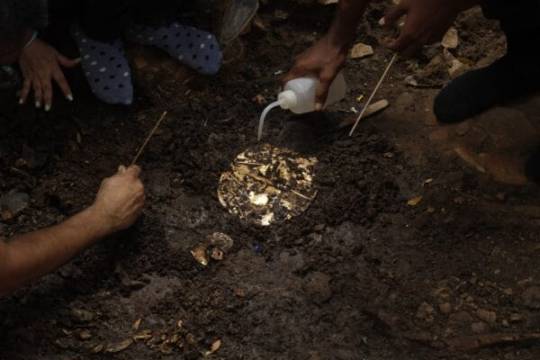
Dr. Julia Mayo, director of the El Caño Foundation and leader of the archaeological project since its inception in 2008, highlighted the importance of this discovery.
The collection, which probably belonged to a high-status adult male, represents a window into life and death in the Rio Grande chiefdom. The tomb, built around 750 A.D., is especially intriguing due to the presence of sacrificial attendants buried alongside the lord, indicating multiple and simultaneous burial practices.
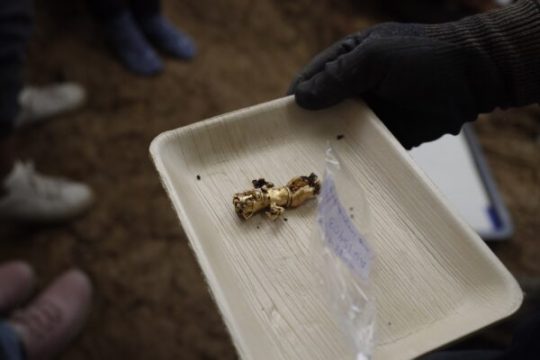
Dr. Mayo noted that the excavation process is ongoing, making it difficult to determine the exact number of individuals buried within the tomb. She said that this type of burial, known for burying a variable number of people in the same tomb, provides valuable information about the beliefs and funerary rituals of the Cocle society.
Dr. Mayo explained that the Coclé lord was buried in a face-down position, a customary practice in this culture, often atop the remains of a woman.
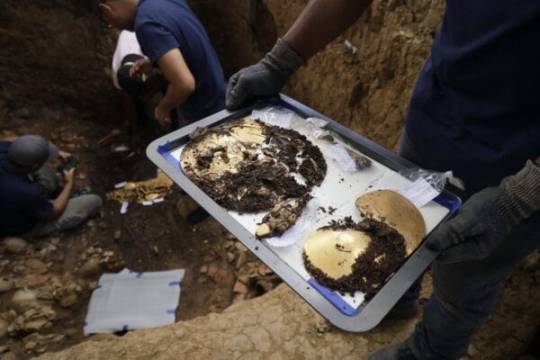
El Caño Archaeological Park, built around 700 A.D. and abandoned around 1000 A.D., has yielded significant archaeological discoveries. In addition to the known monoliths, the site includes a cemetery and a ceremonial area with wooden structures. This discovery stands out for its uniqueness and the insight it provides into Cocle society’s funerary practices.
By Oguz Buyukyildirim.
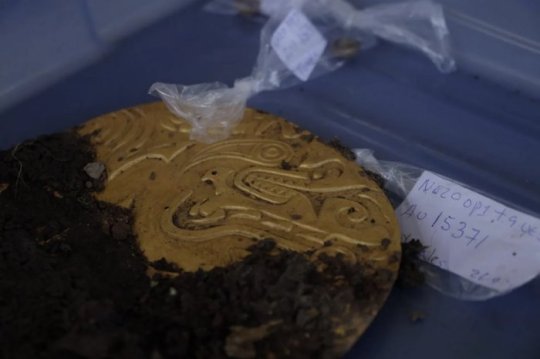
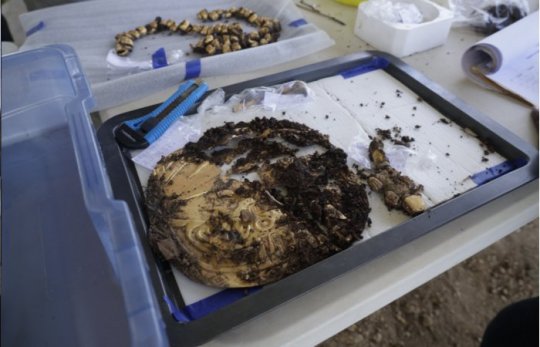
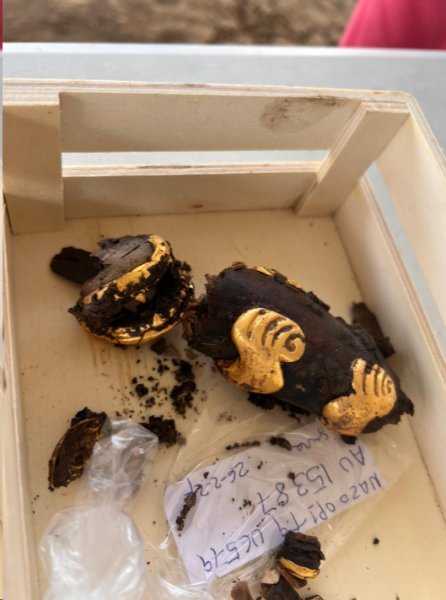
#A Major Tomb With Gold and Ceramic Artifacts Discovered in Panama#El Caño Archaeological Park#Coclé lord#ancient tomb#ancient grave#ancient necropolis#ancient artifacts#gold#gold artifacts#treasure#archaeology#archeolgst#history#history news#ancient history#ancient culture#ancient civilizations#Coclé society#pre-Hispanic times
93 notes
·
View notes
Text

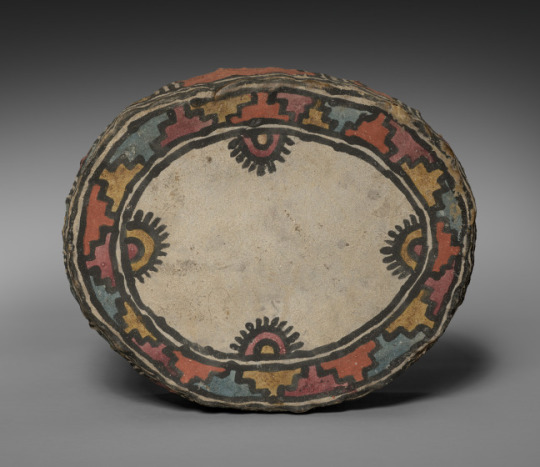
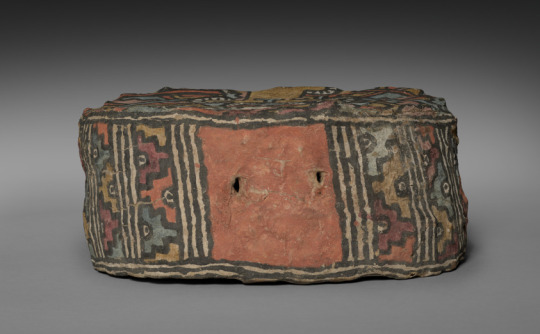
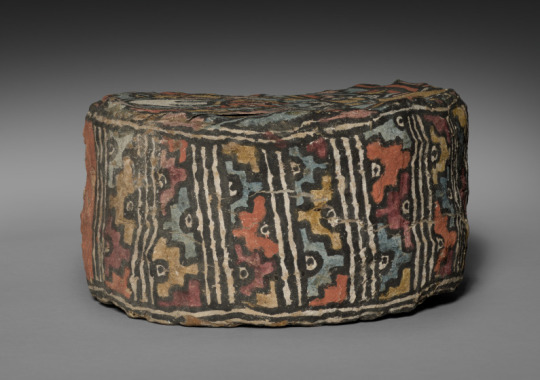



~ Painted Drum.
Date: A.D. 500–1000
Place of origin: Central Andes, Middle Horizon, North Coast
Medium: Animal hide, gesso, wooden slats, pigment.
#history#museum#archeology#archaeology#peruvian#peru#south america#painted drum#drum#andes#a.d. 500#a.d. 1000
991 notes
·
View notes
Text
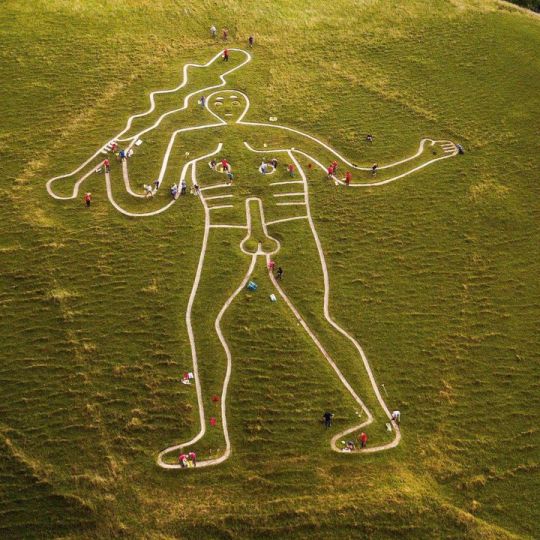
The Cerne Abbas Giant is a 60 meter long hill figure made of chalk in Dorset, England. It was first documented in the 17th century but may date as early as 700-1000 A.D.
104 notes
·
View notes
Text
"Beneath 1,350 square miles of dense jungle in northern Guatemala, scientists have discovered 417 cities that date back to circa 1000 B.C. and that are connected by nearly 110 miles of “superhighways” — a network of what researchers called “the first freeway system in the world.”
Scientist say this extensive road-and-city network, along with sophisticated ceremonial complexes, hydraulic systems and agricultural infrastructure, suggests that the ancient Maya civilization, which stretched through what is now Central America, was far more advanced than previously thought.
Mapping the area since 2015 using lidar technology — an advanced type of radar that reveals things hidden by dense vegetation and the tree canopy — researchers have found what they say is evidence of a well-organized economic, political and social system operating some two millennia ago.
The discovery is sparking a rethinking of the accepted idea that the people of the mid- to late-Preclassic Maya civilization (1000 B.C. to A.D. 250) would have been only hunter-gatherers, “roving bands of nomads, planting corn,” says Richard Hansen, the lead author of a study about the finding that was published in January and an affiliate research professor of archaeology at the University of Idaho.
“We now know that the Preclassic period was one of extraordinary complexity and architectural sophistication, with some of the largest buildings in world history being constructed during this time,” says Hansen, president of the Foundation for Anthropological Research and Environmental Studies, a nonprofit scientific research institution that focuses on ancient Maya history.
These findings in the El Mirador jungle region are a “game changer” in thinking about the history of the Americas, Hansen said. The lidar findings have unveiled “a whole volume of human history that we’ve never known” because of the scarcity of artifacts from that period, which were probably buried by later construction by the Maya and then covered by jungle.
Lidar, which stands for light detection and ranging, works via an aerial transmitter that bounces millions of infrared laser pulses off the ground, essentially sketching 3D images of structures hidden by the jungle. It has become a vital tool for archaeologists who previously relied on hand-drawings of where they estimated areas of note might be and, by the late 1980s, the first 3D maps.
When scientists digitally removed ceiba and sapodilla trees that cloak the area, the lidar images revealed ancient dams, reservoirs, pyramids and ball courts. El Mirador has long been considered the “cradle of the Maya civilization,” but the proof of a complex society already being in place circa 1000 B.C. suggests “a whole volume of human history that we’ve never known before,” the study says."
-via The Washington Post, via MSN, because Washington Post links don't work on tumblr for some godawful reason. May 20, 2023.
#maya#mayan#mesoamerica#central america#el mirador#guatemala#indigenous#indigenous history#indigenous peoples#mesoamerican#architecture#ancient history#anti colonialism#fuck racist misconceptions and narratives about indigenous societies and technologies#history#good news#hope
250 notes
·
View notes
Text
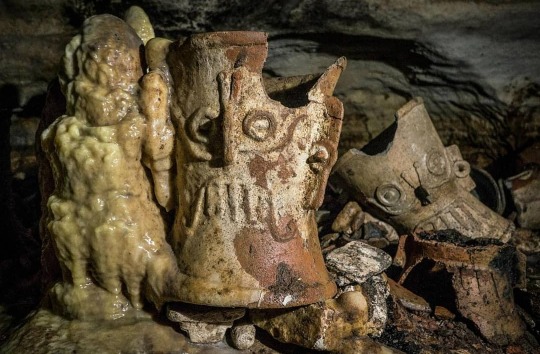
Tlaloc incense burners, found in the Balamku Cave near Chichen Itza. Maya. Mexico • 1000 A.D.
56 notes
·
View notes
Photo

Vessel in the shape of a fruit from the Pachacamác site in Peru, dated 600 to 1000 A.D. Credit...Penn Museum
260 notes
·
View notes
Text
Tablet weaving

Tablet weaving or Card weaving is a weaving technique used for belts or trims. Instead of weaving on a loom, a certain amount of yarn lengths are placed through cards, with the yarn being tightened between a post and the weaver's own body. The pattern being created by turning the cards in a certain direction.
Tablet weaving has been around since the Iron Age, with the oldest examples being found in Hallstatt, Austria dated around 1200 B.C. (3200 years old), and was commonly used in European dress until the Viking age (1000 A.D.). The use later declined with mass produced textiles on big looms being more and more common. Scientists have no idea how patterns were invented or taught to new weavers. No examples of written patterns exist from this 3500 year time span.
Image copyright and content:
Hallstatt and Dürnberg textile remnants, Regina Hofmann-de Keizer
#frankish#merovingian#viking archaeology#archaeology#carolingian#charlemagne#field archaeology#viking mythology#germanic mythology#merovingian archaeology#celtic#germanic#hallstatt#durnberg#dürnberg#celtic archaeology#iron age#Iron Age archaeology#tablet weaving#card weaving#dress history#celtic dress#celtic fashion#viking fashion#viking#norse mythology#odin#wodan#cernunnos#anglo saxon
183 notes
·
View notes